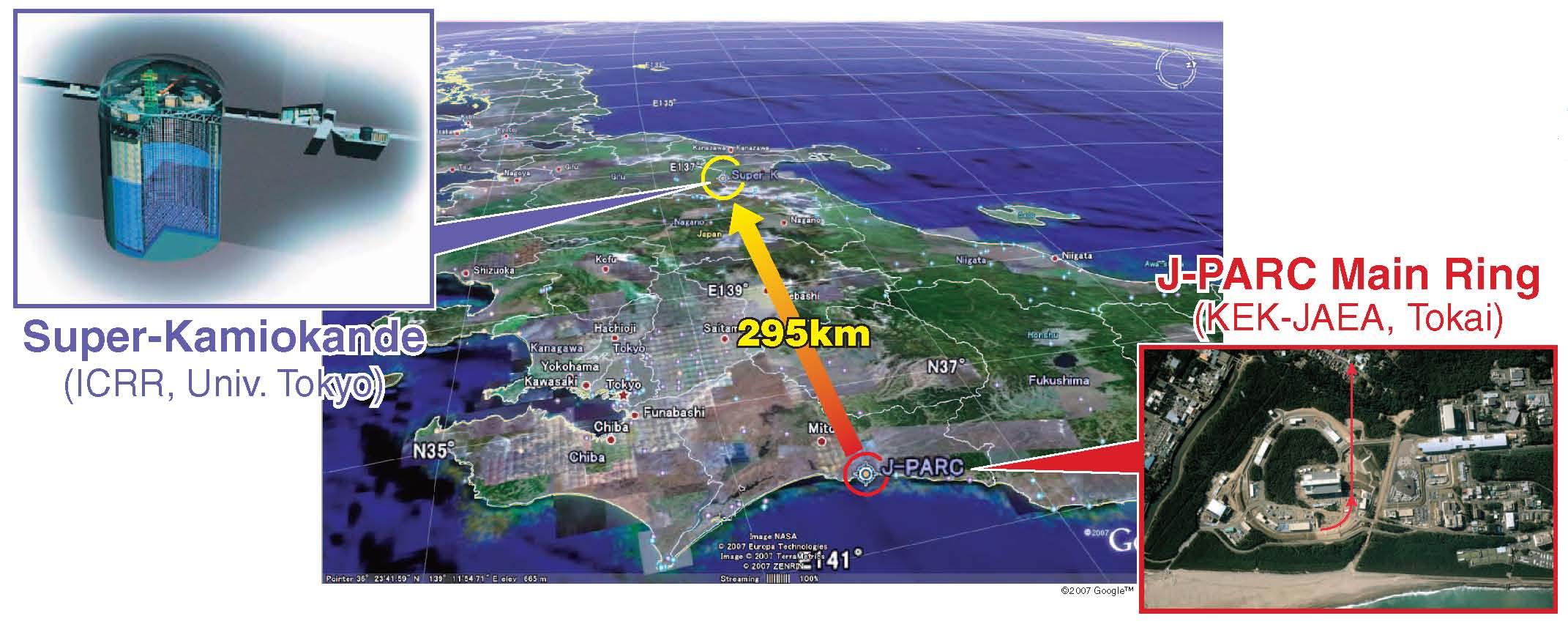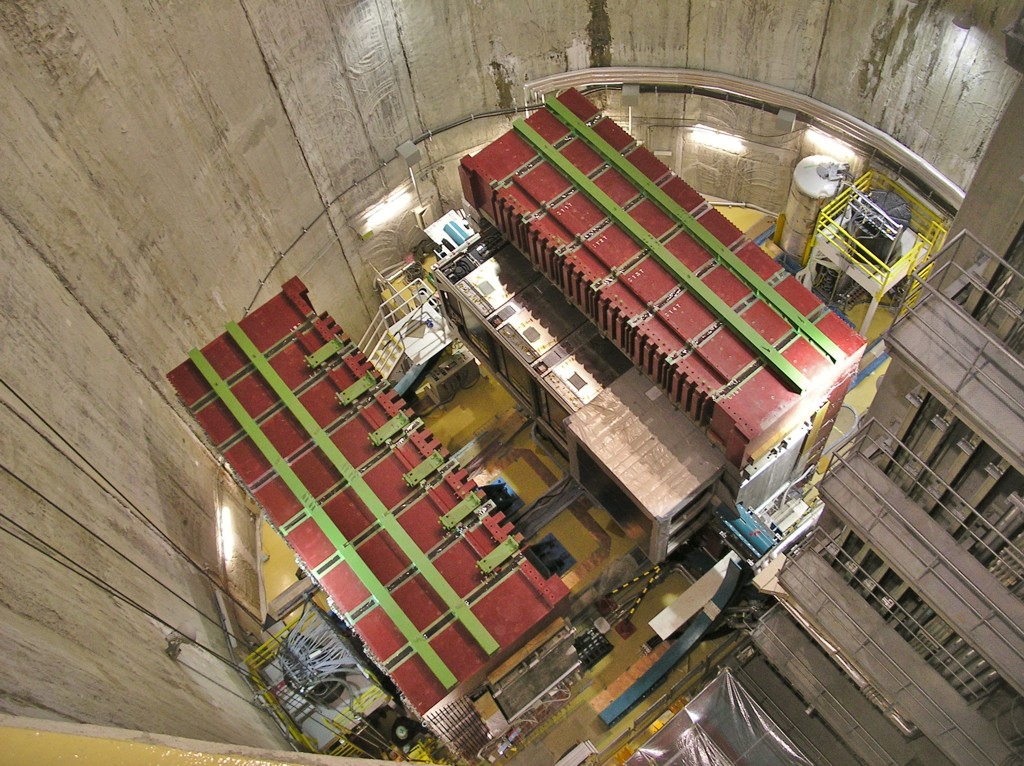The Tokai-to-Kamioka Neutrino Oscillation Experiment
My current work is on the T2K long baseline neutrino oscillation experiment.
The T2K experiment creates a beam of neutrinos by directing bunches from the J-PARC 50 GeV proton synchrotron into a graphite target. An intense beam of pions is collected and pointed toward the detectors, and neutrinos come from the decay products from these particles.
T2K uses three different detectors:
- The INGRID on-axis near detector: A detector at the J-PARC site in Tokai, Ibaraki placed along the axis of the beam.
- The ND280 off-axis near detector: A detector at the J-PARC site placed 2.5 degrees from the neutrino axis. An off axis beam results in a narrower spectrum of neutrino energies, improving sensitivity to neutrino oscillations.
- SuperKamiokande: A large water Cherenkov detector located in the Kamioka laboratory in the mountains near Toyama, about 300 km away from J-PARC. SuperK is also 2.5 degrees from the beam axis.

The neutrino beam created for T2K consists primarily of muon neutrinos (or muon antineutrinos depending on the beam configuration).
This allows for measurements of muon neutrino disappearance, electron neutrino appearance, and cross sections for various processes on the different materials in the near detectors.
T2K, especially when combined with results from other experiments, may also have some sensitivity to CP violation in neutrino interactions.
An early search for electron neutrino candidate events provided some of the earliest evidence for a nonzero value of the neutrino mixing angle θ13.
The ND280 Off-Axis Detector
The ND280 off-axis detector consists of a number of different subdetectors.
The Pi-zero detector (PØD) is designed much like a sampling calorimeter.
Each module (or PØDule) of the PØD consists of a layer of scintillator bars aligned perpenicularly to the beam, another layer of bars aligned perpendicularly to the beam and the first layer, some brass, and a layer of bags filled with water.
The most upstream and downstream sections of the PØD use lead in place of the brass and water in order to capture electromagnetic showers.
The PØD is designed so that the water can be drained, allowing for data to be taken with and without water.
Downstream from the PØD is the tracker, which includes three time projection chambers with two fine grained detectors (FGDs: similar design to the PØD with layers of crossed scintillator bars but with no target layers except for a small number of water layers) separating the TPCs.
Surrounding the PØD and tracker are electromagnetic calorimeters.
all of this is placed within the UA1 electromagnet. The magnetic yoke contains various muon detectors as well.

The design of the ND280 detector allows the data analysis to distinguish between different classes of neutrino interaction events, distinguish beam events from backgrounds such as cosmic ray induced muons, and reconstruct kinematics of the particles in the final state after the interaction.
This allows the ND280 detector to not only make measurements for the oscillation analysis but also to measure neutrino cross sections.
